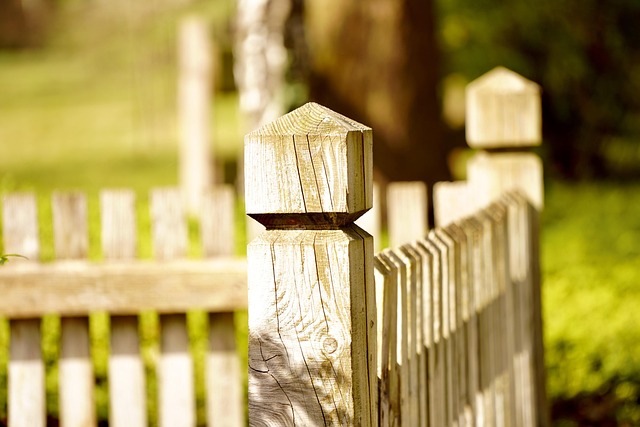Coastal areas present unique challenges for fencing due to harsh weather conditions and corrosive salty air. Durable wooden fences offer a beautiful and secure solution, but selecting the right type is crucial. This article explores the intricacies of choosing and maintaining wood fencing in coastal environments, from understanding local weather patterns to installation tips. By considering these factors, homeowners can enhance their outdoor spaces with long-lasting, aesthetically pleasing fences that withstand the test of time and sea air.
- Understanding Coastal Weather for Fencing Durability
- Benefits of Wooden Fencing in Salty Environments
- Choosing the Right Wood Species for Coastlines
- Sealing and Maintenance Tips for Longevity
- Design Considerations for Beachside Security
- Installing Durable Fences: A Step-by-Step Guide
Understanding Coastal Weather for Fencing Durability
Coastal regions present unique challenges when it comes to fencing due to their harsh, often unpredictable weather conditions. To ensure the durability of wooden fencing in these areas, understanding and accounting for these factors is crucial. Strong winds, salty air, frequent rainfall, and storms are common occurrences that can take a toll on any material, especially wood.
The salt content in seawater is particularly damaging to untreated wood, leading to premature decay and discolouration. Therefore, when selecting fencing materials for coastal areas, opting for durable, weather-resistant woods like treated cedar or redwood is essential. Additionally, proper installation techniques, including securing posts firmly in concrete and using galvanised hardware, contribute to the long-term durability of the fence against these challenging weather elements.
Benefits of Wooden Fencing in Salty Environments
Wooden fencing offers numerous advantages for coastal areas, defying the challenges posed by salty environments. The natural resilience of wood makes it an excellent choice; it can withstand the relentless salt air and moisture, which often accelerate corrosion and deterioration in other materials. This durability translates to longer-lasting fences that require less frequent replacement, making them a cost-effective option for homeowners and property managers.
Moreover, wood has a unique aesthetic appeal that enhances coastal landscapes. Its natural textures and colors can beautifully complement surrounding vegetation and water views. Unlike some man-made materials, wooden fencing allows for creativity in design, from traditional styles to modern, custom patterns, ensuring that coastal properties maintain their individual character while benefiting from robust protection.
Choosing the Right Wood Species for Coastlines
When selecting wood for coastal fencing, understanding the unique challenges of the environment is key. Saltwater exposure, strong winds, and varying temperatures can all impact a wooden fence’s longevity. Choosing the right wood species is an essential step in ensuring your fence not only withstands these elements but also maintains its aesthetic appeal over time.
Hardwoods like cedar and redwood are popular choices for coastal areas due to their natural resistance to rot and decay. These woods have high oil and resin content, which acts as a natural preservative, making them less susceptible to the damaging effects of saltwater. Softwoods, such as pine or spruce, while cheaper, may not be as durable in harsh coastal conditions and could require more frequent replacement or maintenance.
Sealing and Maintenance Tips for Longevity
Regular sealing is key to protecting your wooden fence from the harsh coastal environment. Use a high-quality water-repellent sealer designed for exterior wood, applying it every 1-2 years to fill in pores and create a protective barrier against salt spray, moisture, and UV rays. This simple step can significantly extend the lifespan of your fence.
Maintenance involves consistent cleaning and inspection. Remove any algae or mildew buildup with a soft brush and mild detergent, rinsing thoroughly afterward. Check for loose boards, rot, or damaged posts, repairing or replacing as needed. Maintaining your wooden fence in this way will ensure it remains sturdy, attractive, and long-lasting.
Design Considerations for Beachside Security
When designing fences for coastal areas, especially beachside properties, security and durability are paramount. The fence should be robust enough to withstand frequent exposure to salt water, high winds, and potential storm surges. One effective design consideration is incorporating reinforced posts and cross-bracing made from treated timber or corrosion-resistant materials like aluminum. This structural integrity ensures the fence remains sturdy against extreme weather conditions.
Additionally, privacy and aesthetic appeal shouldn’t be overlooked. Consider taller fences with intricate designs or latticework that offers both security and a view of the ocean. Customized panels featuring natural textures or even integrated lighting can enhance the fence’s visual appeal while still providing necessary protection for coastal homes and businesses.
Installing Durable Fences: A Step-by-Step Guide
Installing durable fences in coastal areas requires careful consideration to withstand harsh weather conditions and salty environments. Here’s a step-by-step guide for a successful installation:
1. Plan and Prepare: Start by assessing your property lines and deciding on the fence style, height, and length. Obtain any necessary permits from local authorities. Clear the site of plants, debris, and loose soil to create a stable base.
2. Choose the Right Materials: Opt for high-quality, treated wooden posts designed for coastal use to prevent rot and corrosion. Use durable fencing materials such as cedar or pressure-treated wood for the fence panels. Ensure all components are suitable for salt air exposure.
